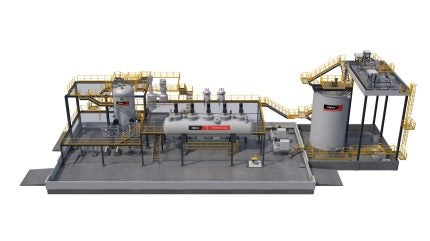Support CleanTechnica’s work through a Substack subscription or on Stripe.
Clean technology was on full display last week. In addition to global and state leaders, Climate Week attendees include many potential clean technology customers and stakeholders. Furthermore, New York City is a global hub for venture capitalists looking for their next opportunity. There were many pitches going on, and I only saw a small part. I plan to follow up on the technology in more detail, but a few examples stood out.
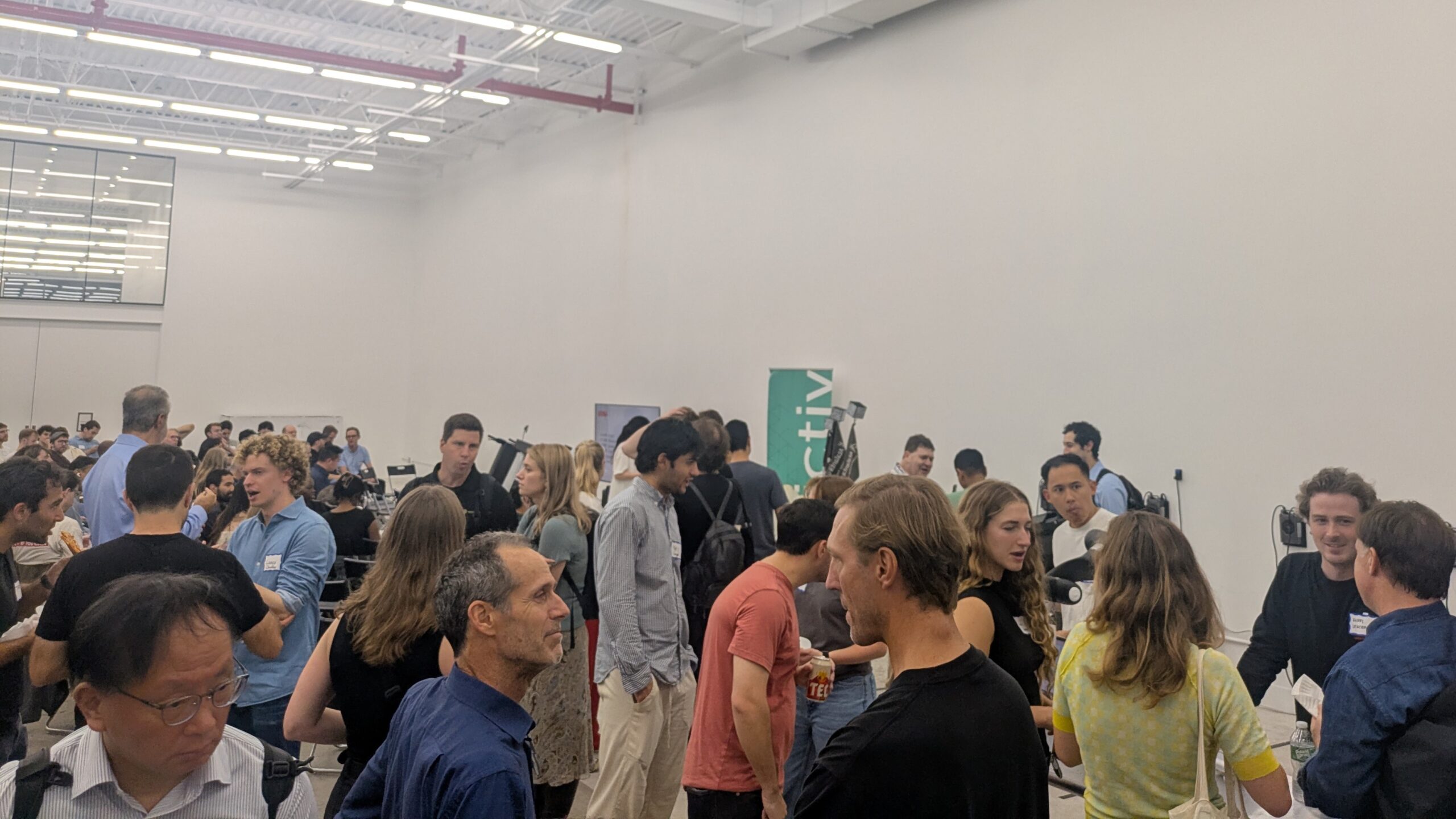
Clean Innovation at the Hardware Meetup
The 111th NY Hardware Meetup was focused on Climate Week this month. These meetings bring together a wide range of engineers, builders, innovators and makers, all focused on making physical products. The event was filled with dynamic people and new ideas.
The Climate Week meetup was sponsored by Fictiv, which provides a wide range of manufacturing services, leveraging a global footprint. While not specifically focused on just clean manufacturing, they do offer carbon neutral shipping, materials with improved sustainability, and support for sustainable design. However, perhaps their greatest value is in conveniently connecting people to global manufacturing capabilities, whether it is for an initial prototype or series production. This can help many clean technology innovations go from concept to reality.
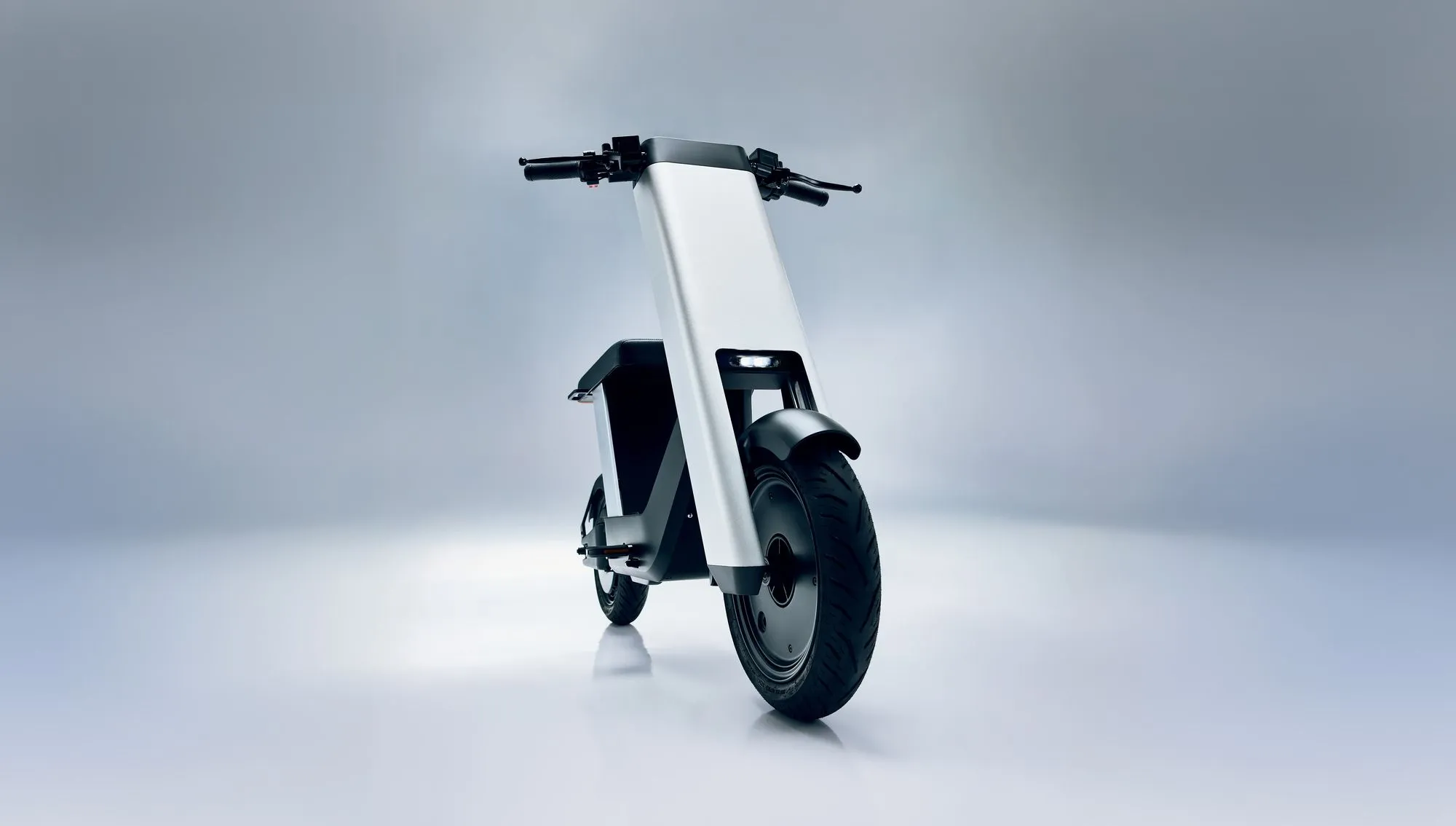
Electrified personal transportation company Infinite Machine hosted the event at their Long Island City facility, where they design, engineer, and build working prototypes. CleanTechnica had covered their P1 prototype in the past. However, that highway-capable electric two-wheeler has come a long way with design refinements. A lot of attention has clearly gone into the details to ensure utility, safety, and security, as well as a positive overall user experience.
In addition, the company’s product line has expanded to include the Olto (seen above), which is built to take maximum advantage of bike lane regulations. This vehicle also offers more refinement and capability than the typical e-bike, with particular attention paid to integrating safety systems, such as turn signals. At $3,495, it is a bit more expensive than some of the cheapest, generic e-bike options on the market. However, you can see where the money is going. Infinite Machine is starting deliveries soon and has more vehicles in development. It will be a company to watch.

Thea Energy, based in New Jersey, delivered a presentation highlighting their progress and prototypes in the development of fusion energy. Their current focus is on developing the massive, yet precise, magnetic fields needed to contain plasma for controlled fusion reactions. Earlier attempts tended to use large magnets that distorted under the extreme temperatures and forces needed. Thea Energy’s innovation involves replacing those large magnets with an array of laptop-sized magnets that are controlled by software to deliver the precise magnetic fields necessary to take fusion to the next step. From there, in a few years, they hope to get to net energy positive and then scale up to deliver utility-scale power. It was a fascinating concept, and we will see where it goes.
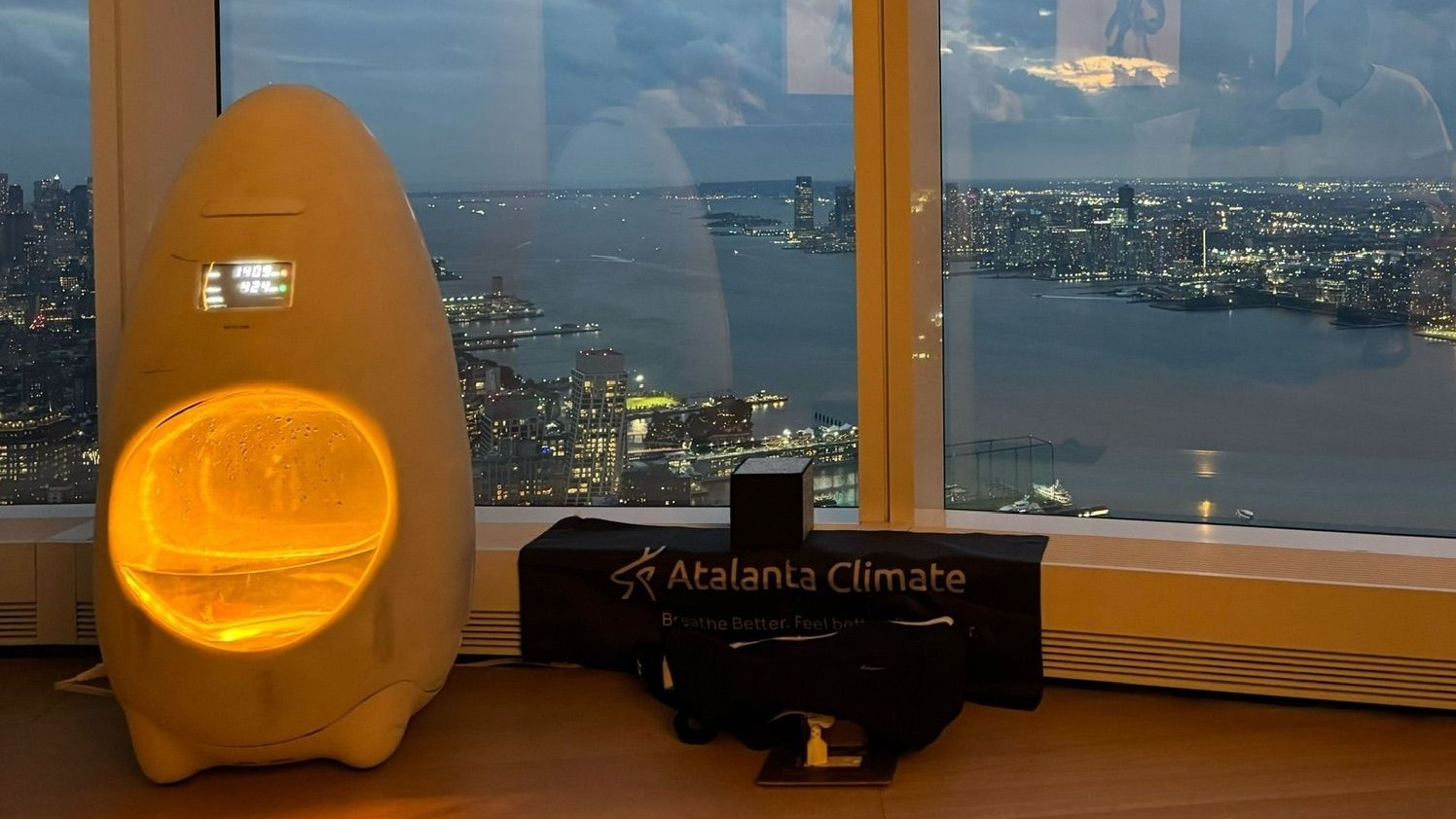
Vancouver-based Atalanta Climate showcased indoor carbon capture. Indoor CO2 emissions can be multiple times those outdoors, impacting focus, productivity, sleep, and overall health. Atalanta uses a compact system with an aesthetically pleasing egg shape to both purify the air and remove carbon dioxide, at a claimed rate equivalent to 30 trees planted in a room. The higher the carbon concentration is in a room, the more efficient the conversion. The system uses gypsum-based cartridges and a chemical reaction to convert CO2 into carbonates of calcium collected in a water reservoir. Those carbonates are mildly alkaline but can be disposed of safely, while being potentially beneficial in some circumstances, such as addressing acidic soil.
The system uses roughly 30W, which is on the low end of energy consumption for air purifiers that do not remove carbon. Several of their prototype units, running on battery power, were seen around the city being towed behind bicycles. Units are currently on presale with deliveries expected soon. Overall, this clearly is not removing enough CO2 from the atmosphere on its own to noticeably reduce global temperatures. However, as buildings become more airtight and insulated, indoor CO2 levels can rise to unhealthy levels. Being able to maintain indoor air quality without ventilation upgrades and associated energy losses could make a significant difference for many buildings and their occupants.
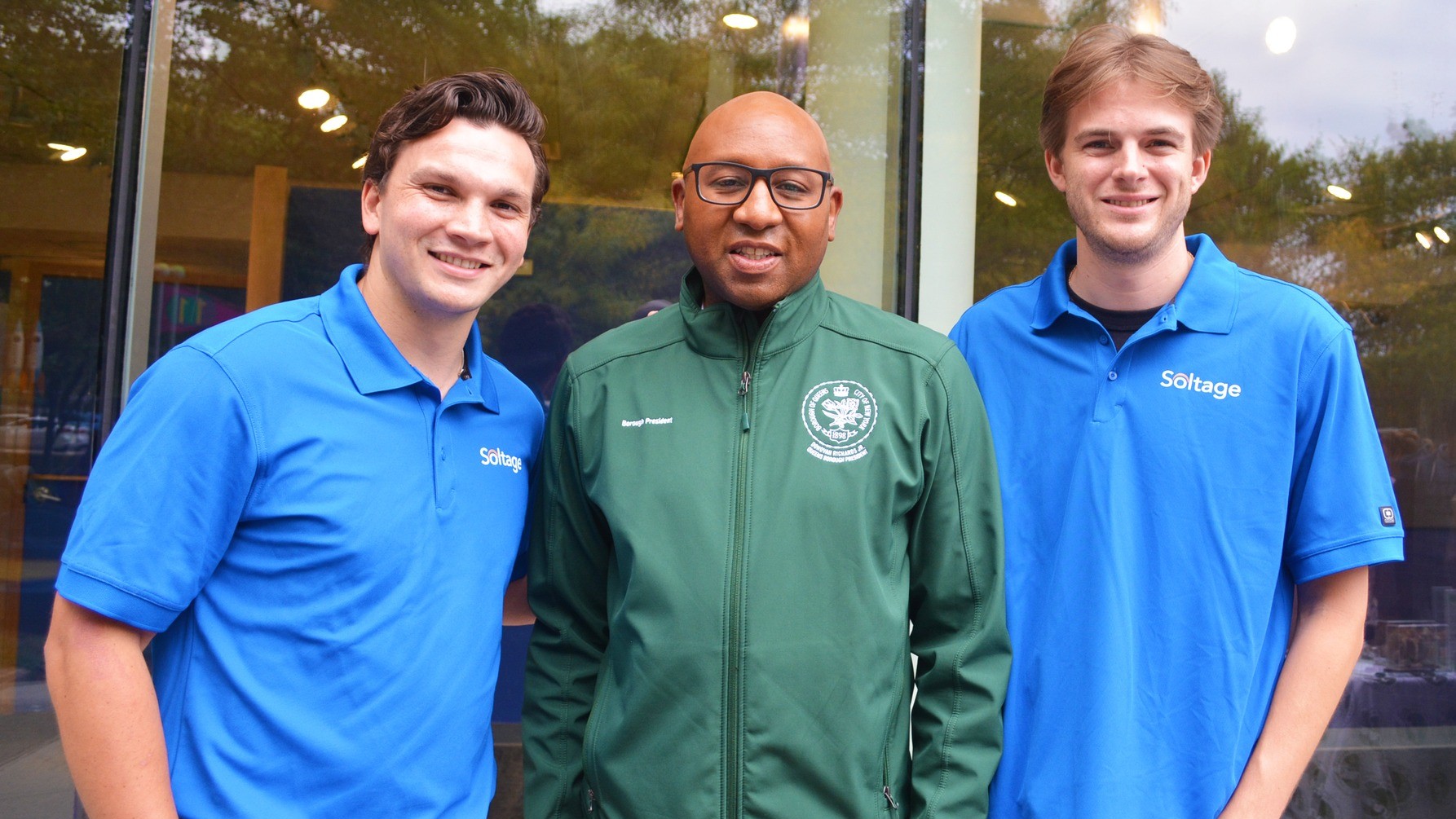
Developing Distribution Level Energy Storage Systems
Back at the Queens Climate Expo, hosted by Borough President Donovan Richards, representatives from Soltage described their development of battery energy storage systems (BESS) to work at the distribution level. Utility-scale storage at the distribution level, rather than at the point of generation or transmission, is especially important. Increased electrification also means increased demands on the grid. Infrastructure upgrades can be minimized by reducing peak demand, and loads can become more stable. Costs to utilities and their customers can be reduced. Distribution-level storage also helps to ensure that solar fed into the grid by rooftops actually gets put to use, rather than just creating more curtailment. And the on-demand energy reduces the need for natural gas “peaker” plants. However, with a multitude of energy sources and energy consumers, maximizing performance and reliability can be a challenge. While AI and data centers can have a bad reputation from an energy use perspective, optimizing based on millions of data inputs can also significantly improve the efficiency of grid storage, with an overall reduction in emissions, while ensuring stability.
While New York City has scale, building storage systems here presents challenges. Our grid is complex, and we have some of the strictest regulations and fire codes in the country. Architects and civil engineers also need to ensure the design works with the neighborhood and urban environment. However, by taking on one of the most difficult applications, Soltage can more easily expand into other markets with safe, effective, and proven technology that exceeds local requirements.
Local Innovation with Global Collaboration
Many of the showcased innovations being created in North America were being enabled by global manufacturing. Many products were manufactured in Shenzhen, where the design for manufacturing (DFM), production timelines, quality, and capabilities were highlighted, more than the price — applying some global perspiration to the local inspiration, to bring new products to market. This collaboration lets US innovators become competitive in global technology. Protectionist and isolationist measures are reducing US technological competitiveness and potentially costing net jobs in the clean technology transition, while doing so in the name of protecting jobs under a legacy industry perspective.
In addition, trade barriers on components and materials slow the transition. Energy storage systems rely on LFP batteries, with the cells and/or systems typically coming from China. Local production could be set up, but that would add a lot of time, in addition to cost. And segregating technology to lines on a map will make us less likely to have the most advanced tech available globally. Regulations are often similar, but are disharmonized between countries, adding significant re-certification cost and time. This makes it more difficult to transition to renewable energy and realize the benefits. Most of the jobs come from the implementation of renewable energy generation and energy storage systems. In addition, most of the economic and environmental benefits come from the usage of that generation and storage.
In effect, by taking a more global perspective and encouraging collaboration, greater environmental and economic impact can be made locally.
Summing It Up
Overall, I came away from Climate Week overwhelmed and impressed. Despite many of the discouraging developments in Washington, DC, and xenophobic comments online, I saw an array of new, sustainable, equitable, collaborative, and multilateral perspectives starting to emerge from the global thinking at the event. New York was showing leadership in addressing emissions. Innovative clean technologies were being developed and brought to market. People were making a tangible impact.
I met with many impressive people and plan to follow up with many of them soon in future posts. In addition, I deepened some local connections who are addressing climate change and its impacts. Beyond Climate Week, I have new inspiration moving forward.
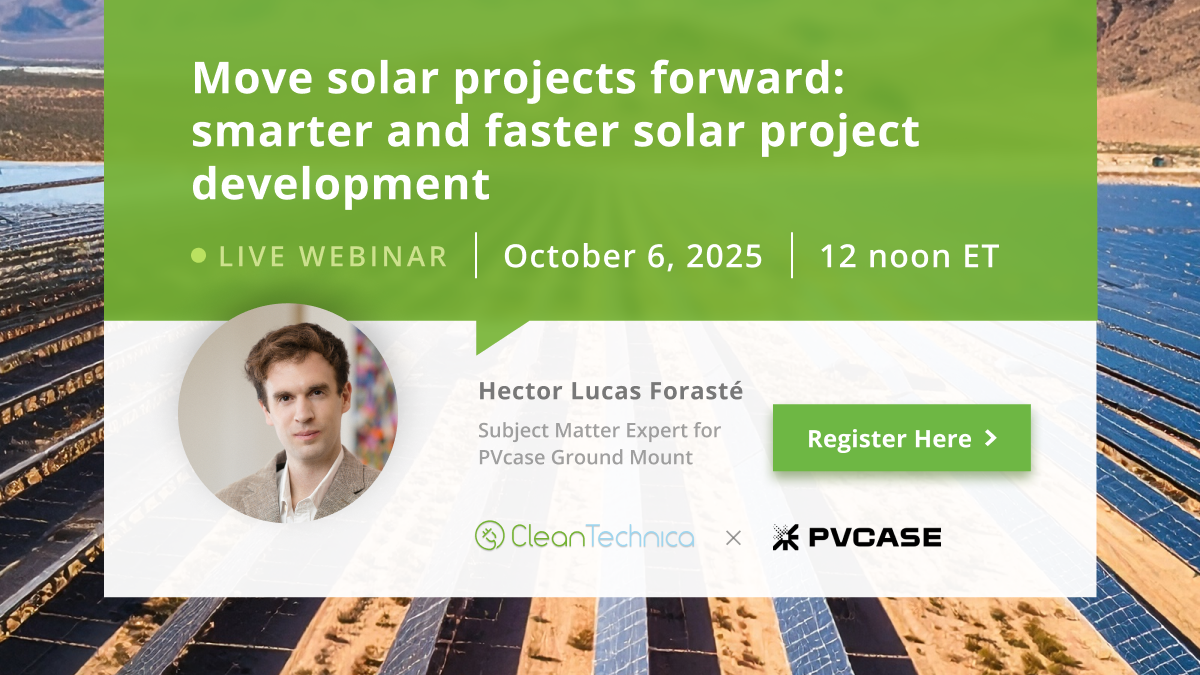 Sign up for CleanTechnica’s Weekly Substack for Zach and Scott’s in-depth analyses and high level summaries, sign up for our daily newsletter, and follow us on Google News!
Sign up for CleanTechnica’s Weekly Substack for Zach and Scott’s in-depth analyses and high level summaries, sign up for our daily newsletter, and follow us on Google News!
Have a tip for CleanTechnica? Want to advertise? Want to suggest a guest for our CleanTech Talk podcast? Contact us here.
Sign up for our daily newsletter for 15 new cleantech stories a day. Or sign up for our weekly one on top stories of the week if daily is too frequent.
CleanTechnica uses affiliate links. See our policy here.
CleanTechnica’s Comment Policy



